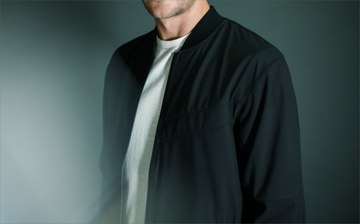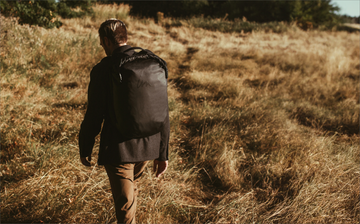Anyone who spends a lot of time in the water will tell you that you need a wetsuit unless you're lucky enough to live in a tropical climate. Water can get cold and make you uncomfortable and can even cause damage to your body.
But, choosing the right wetsuit can be hard. There are a lot of different kinds of wetsuits and not all of them are right for all conditions.
So, how do you choose the best wetsuit for you? Read on to find out our tips for finding your perfect wetsuit.
1. Figure Out What You'll Use It For
The kind of wetsuit you use will depend on what you're planning on using it for. If you're just starting out, a basic model will be just fine for you.
If you're interested in advancing to a higher level of skill, you will need an advanced performance wetsuit. This will have extra warmth, flexibility, and durability that can give you the edge you need to stay in the water longer and hone your skills.
2. Get an Idea of What Conditions You'll Use It In
Wetsuits need to insulate your body from the chilly temperatures of the water. Each model is made for a certain water temperature. The colder the weather and water temperature, the thicker your wetsuit will need to be.
If you're planning on spending any length of time in very cold water, you'll want a full-length wetsuit to protect you.
3. What's Your Budget?
Expensive doesn't always mean better and buying the least expensive model of wetsuit doesn't mean you won't be protected in the water. However, you do get what you pay for.
The less expensive models won't be as stretchy or as light as one of the more expensive models.
If you only plan to spend a little time in the water recreationally, a base model will work just fine for you. But if you plan to use this wetsuit full time, you'll want one that maximizes your comfort level.
4. Understand Suit Types
There are many different kinds of wetsuits out there to choose from. We'll outline the most popular here for you.
Full Suits
A full-length suit is also known as a streamer.
A full wetsuit will envelop your entire body. They usually have long sleeves and full leg coverage, though some also have short sleeves.
These wetsuits are perfect for winter and places where the water is freezing even when it's not cold outside.
The short-arm streamers are good for when its springtime or when you're only planning to go out for a short period of time.
Spring Suit
You can also call a spring suit a springy or a shorty. These suits have legs that are cut off just a little bit below the knee. They come in both short and long-sleeved varieties.
Spring suits are ideal for warmer weather surfing and are typically made of a thinner material.
Farmer Johns
Farmer Johns are considered the overalls of the surfing world, with their sleeveless tops and long legs. They're best used with a rash guard or days when it's warm outside. The sleeveless design makes it easier to paddle.
There are also short johns where the legs are cut off below the knee.
There are also different hybrid versions of wetsuits that you can mix and match. You can customize your suit to best handle the weather in your area in and out of the water.
5. Understand the Material
While many people think the material that wetsuits are made to keep you dry, this isn't actually the case. The idea behind a wetsuit is to let a small amount of water get into the suit at first. Once that water is heated by your body, it insulates you with a layer of warmth.
Foam neoprene that is treated with water repellent chemicals keeps the ocean water from washing in and changing the temperature of the water in your suit.
This method can only keep you so warm for so long, though. The true ability of a suit to keep you warm for long periods of time spend underneath cold water all depends on how thick the material is.
The thicker the material, the warmer you'll be.
When you bulk up in your suit, though, your range of movement will suffer. So you have to try to balance out what is important to you in your water sports.
Also, neoprene is ridiculously hard to get in and out of. Luckily enough, manufacturers have figured out a way to fix that problem.
They place smooth skin nylon on the inside of the suit, allowing it to glide on and off much easier. It also adds another layer of warmth and protection.
6. Think About Stitching
There are a couple of different ways that your wetsuit could be held together. They weren't exactly effective when they were first made because of the holes caused by the stitching process. There are a few ways that we have gotten around that and we'll list them here.
Taped seams came around when surfers were finding it too difficult to get in and out of their suits without ripping them at the seams. The tape covers the holes and adds durability to the seam.
It's made from a strong cloth strip and waterproof backing. Manufacturers melt the tap onto the neoprene with a heat-sealed. It creates a strong, waterproof way for different panels to connect.
Your suit could also use glue to keep the pieces together. however, the glue isn't terribly durable so it's usually paired with taping the seams.
There are also special stitches that manufacturers could use to hold your suit together. They could have blind stitched, overlocked, or flat-locked seams. All of these things go into deciding how comfortable your suit fits, how well it moves, and how waterproof it is.
7. Try It On
This is probably the most important tip we could give you about purchasing a wetsuit. The suit isn't just supposed to keep you warm, it's supposed to fit right and help you in the water.
A wetsuit can't be too baggy or too tight. If it's too baggy, the water pocket won't ever heat up and insulate you. If it's too tight, no water will ever get in.
You have to make sure the suit fits you the right way in order to get the most out of it.
To surf comfortably, you have to have a range of motion in the shoulders and knees to help your motions stay fluid as well.
The Best Wetsuit For You Is Out There!
Finding the best wetsuit for you can seem like a complicated process, but if you follow the tips above you should have no problems. Just keep in mind the kind of activity you plan on doing, how it fits, and how durable you need it to be. Once you've got that down, you'll find the best wetsuit for you.
For more information about wetsuits and your other water wear needs, visit us today!




